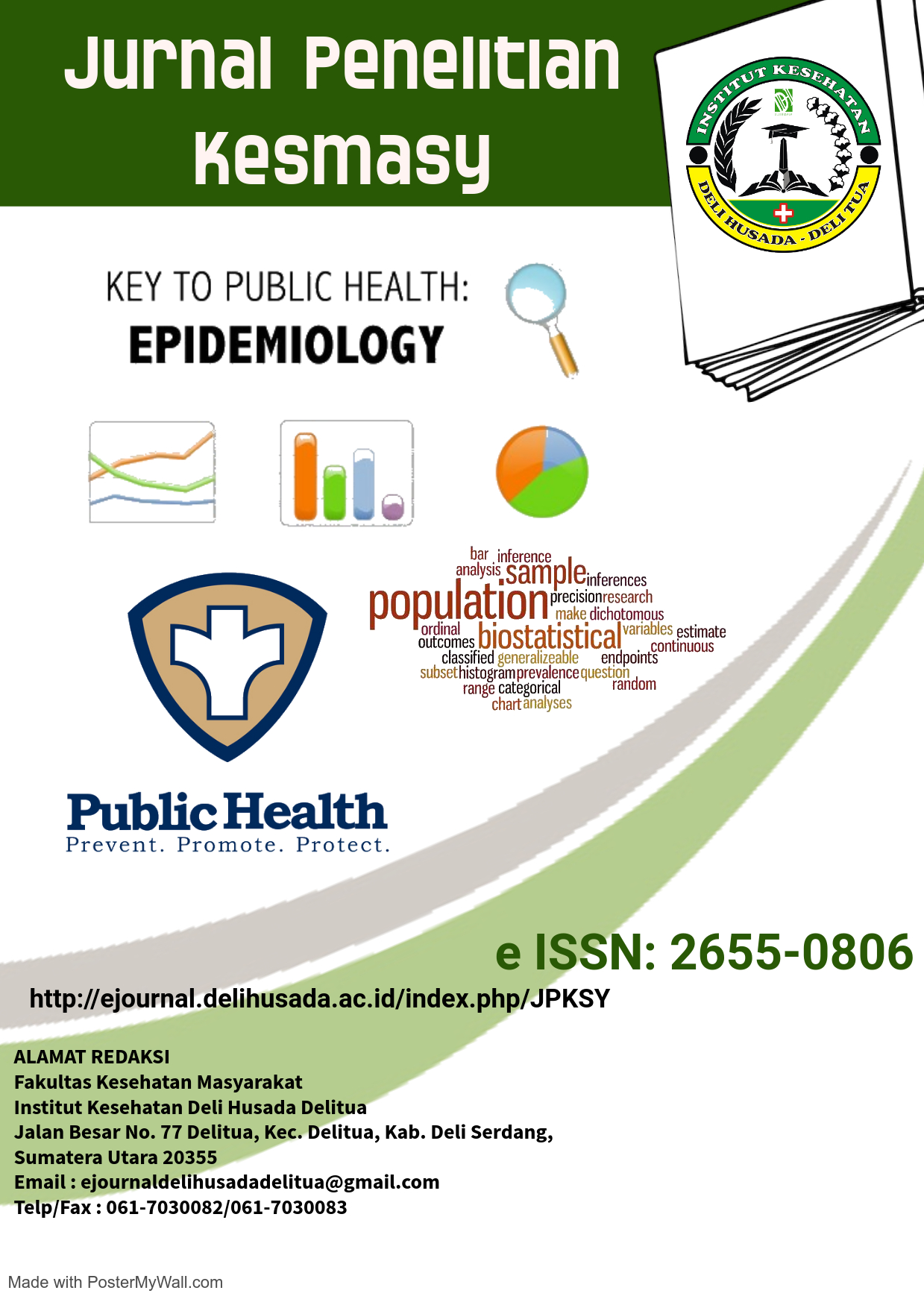FAKTOR-FAKTOR YANG BERHUBUNGAN DENGAN PENGGUNAAN METODE KONTRASEPSI IMPLANT DI WILAYAH KERJA PUSKESMAS NAMO RAMBE KECAMATAN NAMO RAMBE
Abstract
Total fertility rate has declined globally but running very slowly, it is occurred because of the low use of long-term contraception. Long Term implant cotraception method more effective to control the population by preventing unwanted pregnancy. The aims of this study to determine the factors of related to the using of implants contraception method among women in reproductive ageat Puskesmas Namo Rambe Kecamatan Namo Rambe. This study use dacross-sectional analytic and the number of sample is 96 women in reproductive age (PUS) which selected by systematic random sampling.The data analysis was done by using univariate, bivariate with chi square test and multivariate logistic regression.It can be assumed that the percentage of implant use in women of reproductive age (PUS) at Puskesmas teladan of Medan was 35,5%. The variables that have a statistically significant correlation to the use of implants are husband’s support (p = 0,001), access to health facilities (p = 0,001) and cultural values (p = 0,002). 38,5% possibility of implant use relates to some variables, they are cultural values, access to health facilities and husband’s support . Most of the related factors for implants use is good husband’s support about implants.
References
Atikah, P. 2010. Panduan Memilih Kontrasepsi. J. Budi, Editor. Edisi pertama.Yogyakarta: Nuha Medika.
Badan Kependudukan dan Keluarga Berencana Nasional (BKKBN). 2006.Pedoman Kebijakan Teknis KB dan Kespro. Jakarta: Kantor Menteri Negara Kependudukan.
Badan Pusat Statistik (BPS). 2013.Survei Demografi dan Kesehatan Indonesia 2012.Jakarta: BPS, BKKBN, Kemenkes, ICF International.
Depkes RI. 2006.Pedoman Penyelenggaraan dan Prosedur Rekam MedisRumah Sakit di Indonesia. Jakarta: Depkes RI
Dinas Kesehatan Pamatang Raya . 2012. Profil Kesehatan Pamatang Raya Tahun2012.Pamatang Raya: Dinas Kesehatan Pematang Raya.
Hartanto, Hanafi. (2002). Keluarga Berencanadan Kontrasepsi. Jakarta:Pustaka Sinar.
Hidayat, A. Aziz Alimul. 2011. Metode Penelitian Kebidanan dan Teknis Analisis Data. Jakarta : Salemba Medika.
Handayani Sri. 2017. Pelayanan Keluarga Berencana. Yogyakarta: Pustaka Rihana.
Kementerian Kesehatan RI. 2010. Program Kesehatan Reproduksi danPelayanan Integratif di Tingkat Pelayanan Dasar.Jakarta:Kemenkes RI
Kementerian Kesehatan RI. 2011. Tentang Pengendalian Penyakit danPenyehatan Lingkungan. Kemenkes RI
Martini dan Anggraini Yetti. 2007. Pelayanan Keluarga Berencana. Yogyakarta: Rohima Press.
Mochtar, Rustam. 1998. Sinopsis Obsetri. Jakarta: EGC.
Niven. 2002. Psikologi Kesehatan. Jakarta: EGC.
Notoatmodjo, Soekidjo. 2007. Kesehatan Masyarakat: Ilmu dan seni. Jakarta:Rineka Cipta
Sinclair, Constance. 2009. Buku Saku Kebidanan. Jakarta: EGC







